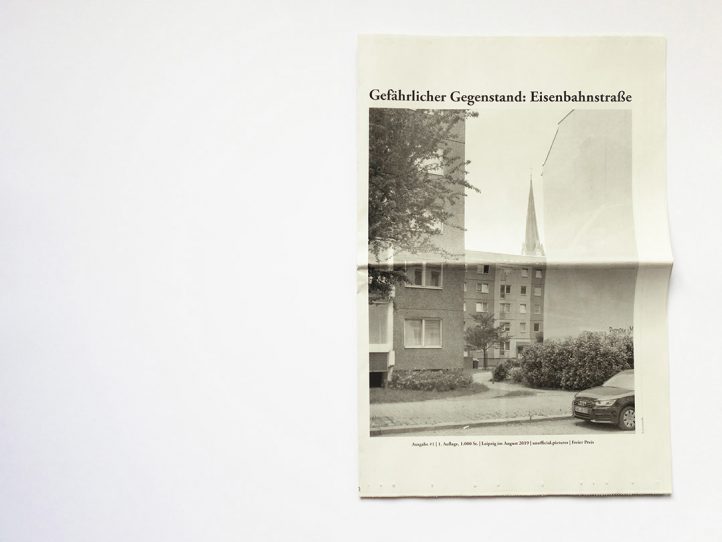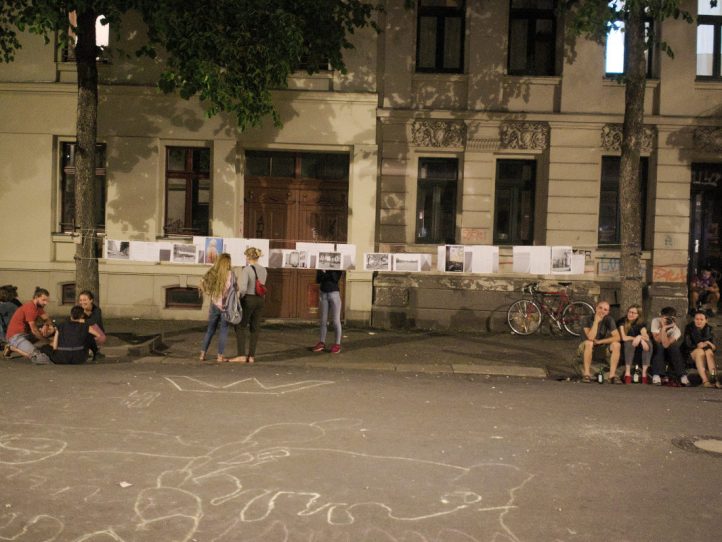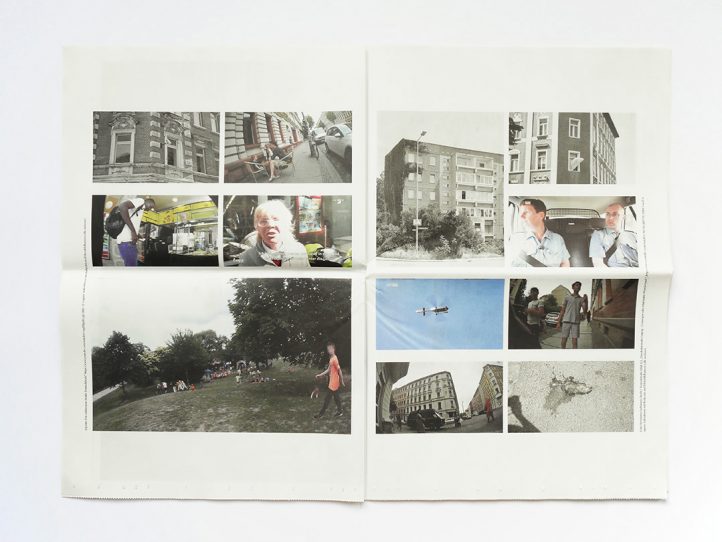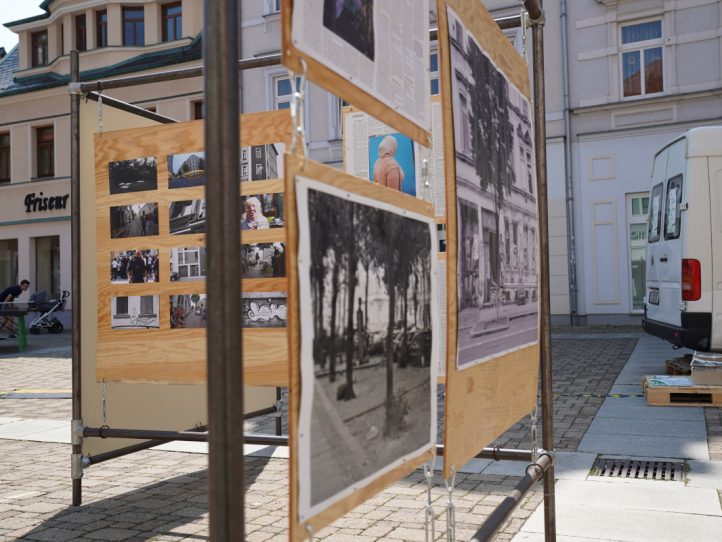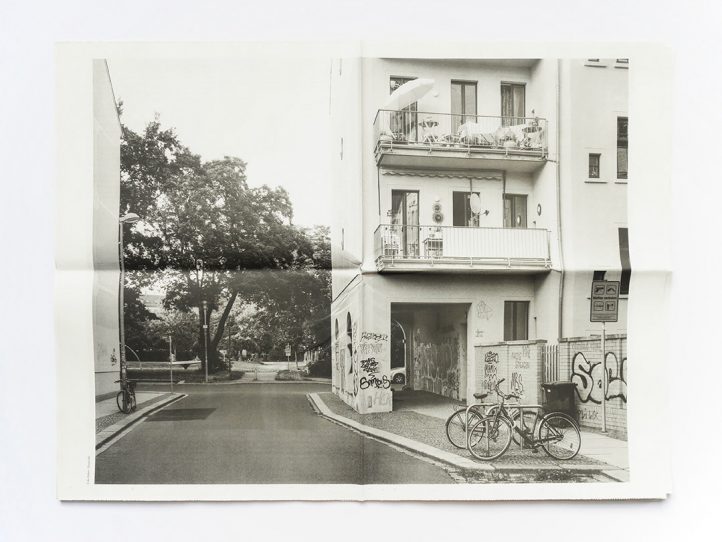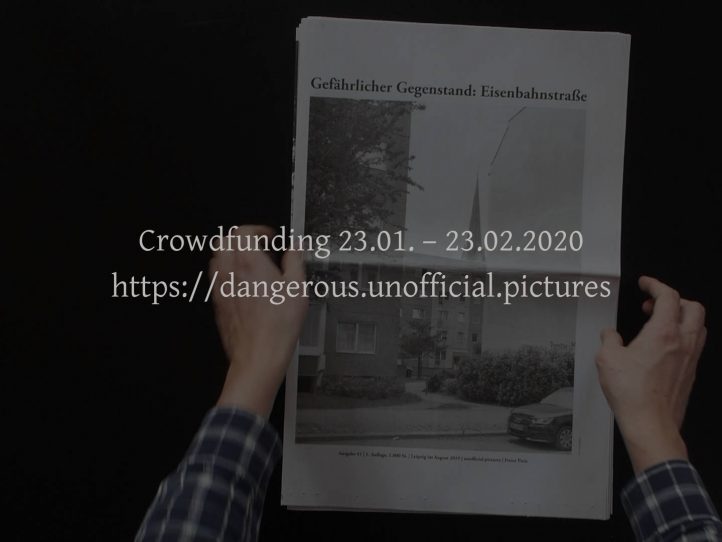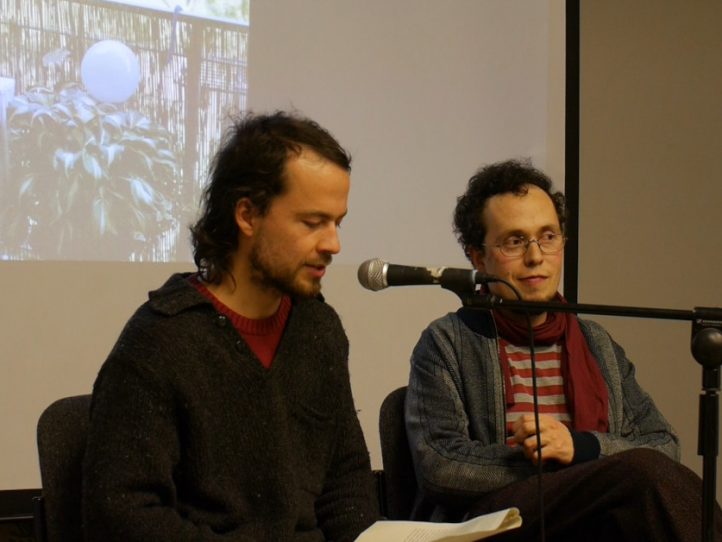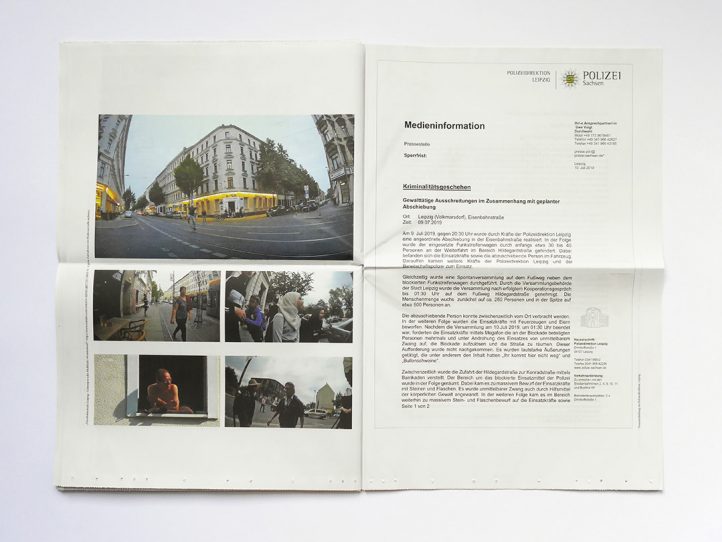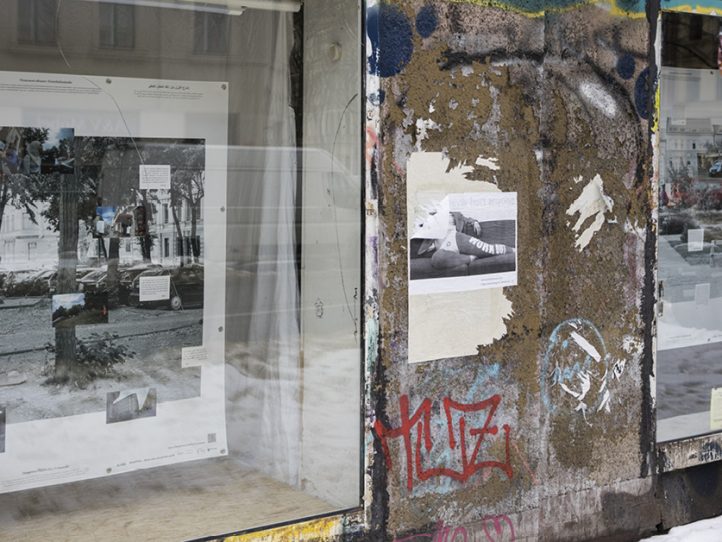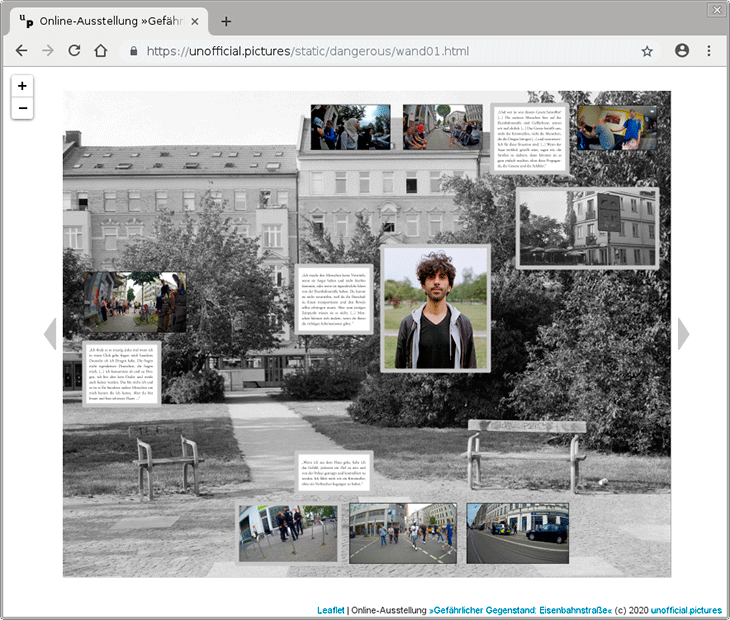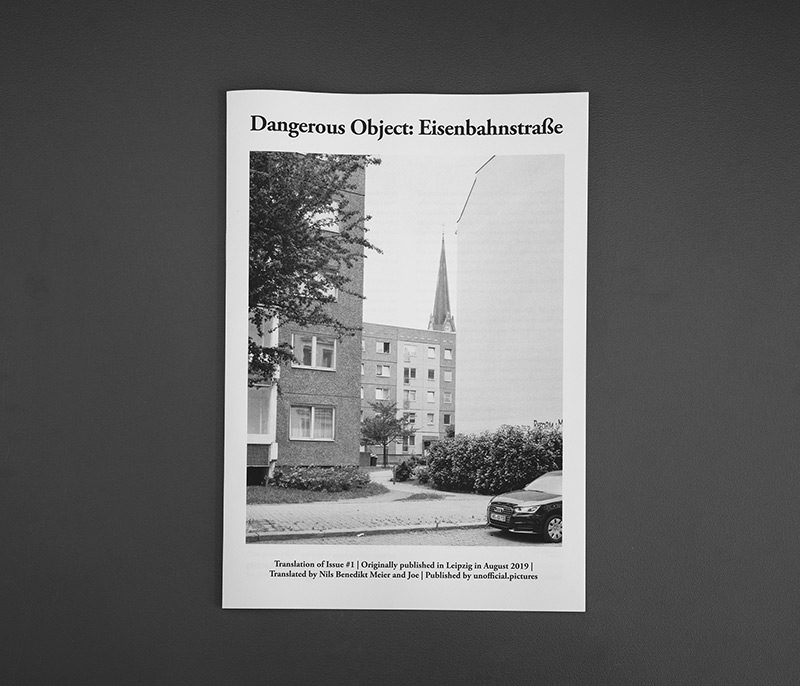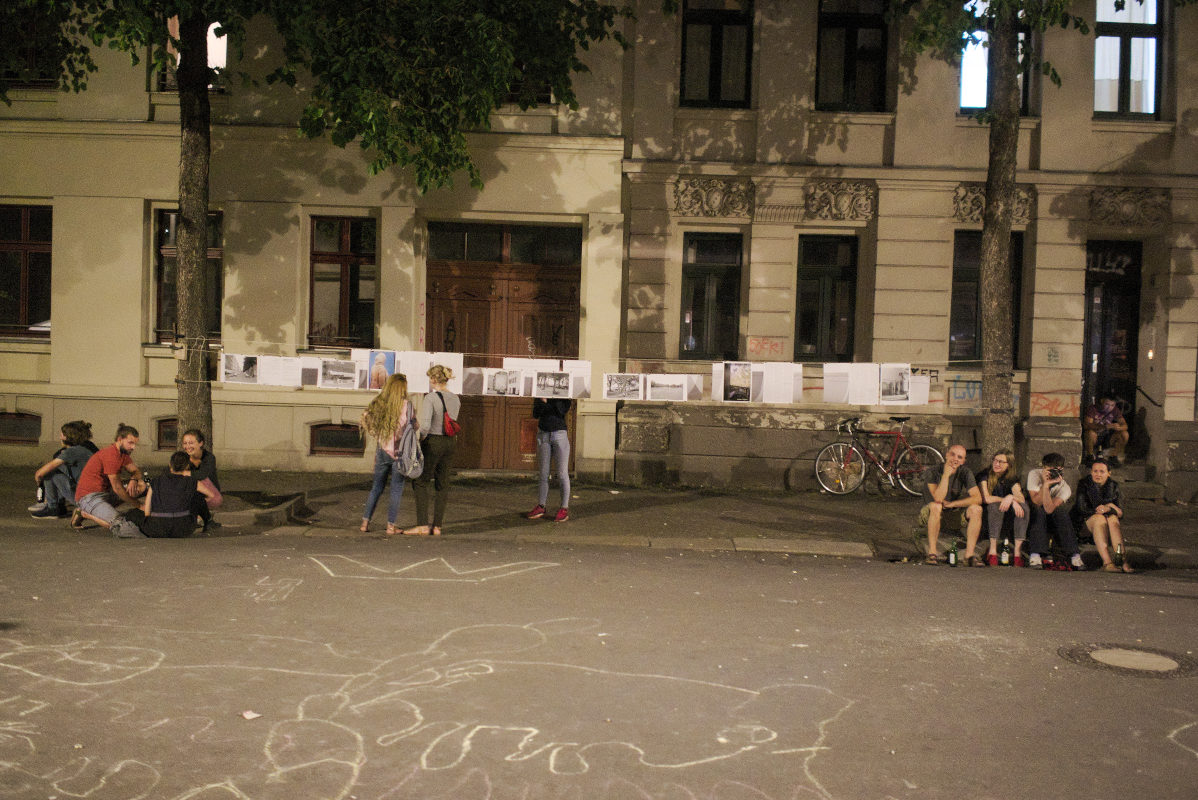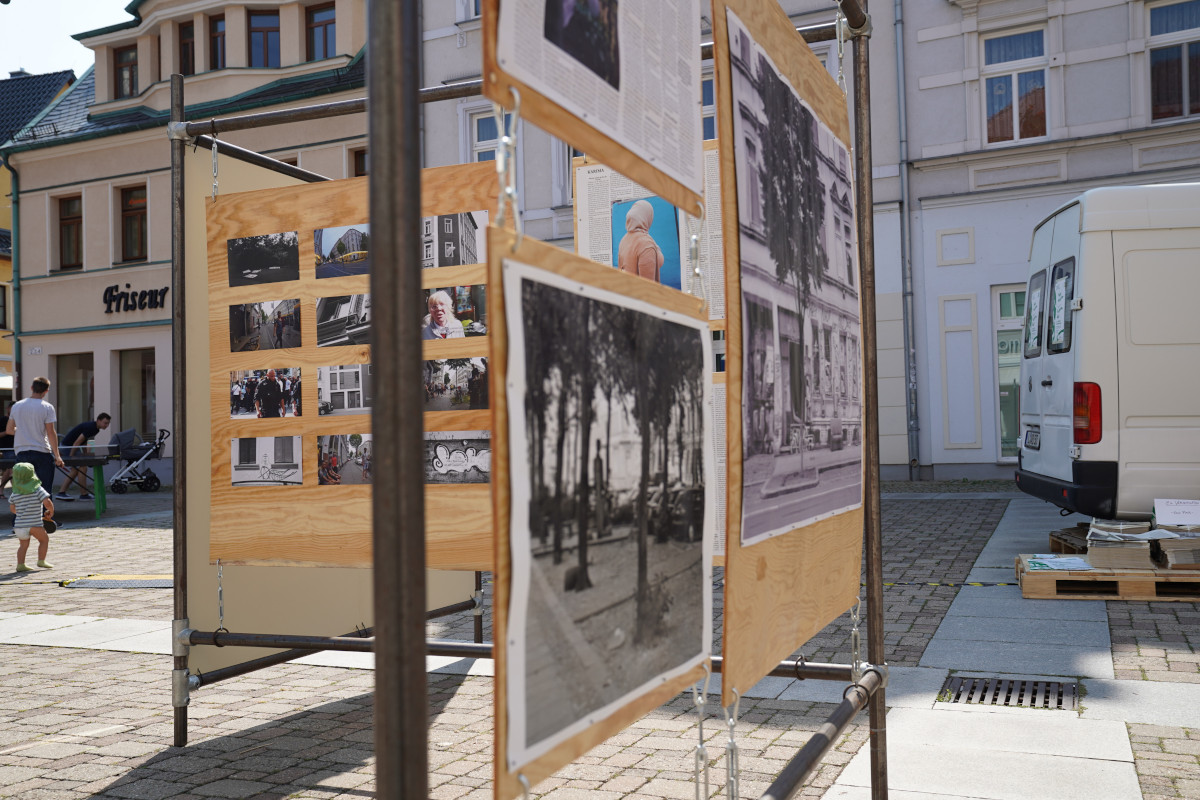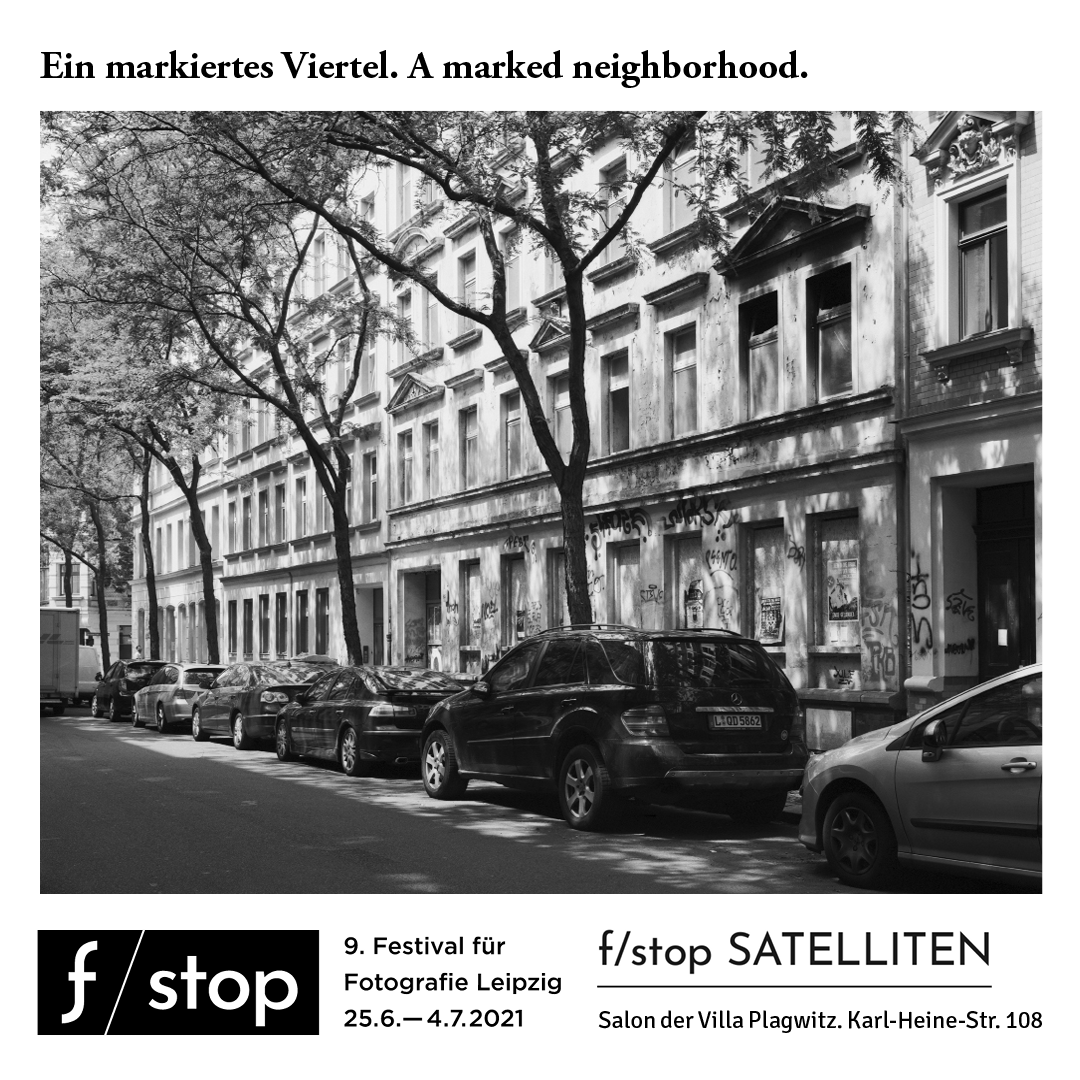A marked neighborhood.
The project in a nutshell
Eisenbahnstraße in Leipzig? The media have been full of racist and classist clichés about it for years. And as if to officially confirm this stigmatization, Saxony’s first weapons ban zone was introduced here in November 2018.
We thought: this sucks! And we interviewed residents from the adjacent neighborhoods. We published these interviews together with other texts and many of our own photos in two issues of our newspaper “Dangerous Object: Eisenbahnstraße” – to show: Eisenbahnstraße is much more! And the problems that exist here are more complex than BILD or ProSieben want to tell us.
Current exhibitions
Outdoor exhibition since 4/2021
East Park, Mariannenstraße 91 3⁄4
Online Exhibition
This is the online version (in German). Like the newspapers, it contains interviews with residents and various photographic strategies to approach the neighborhoods around Eisenbahnstraße, as well as the issues that are important to us. In addition, there will be individual video clips and, in the future, possibly audio recordings.
The central concern of the online version, as with the newspapers, is to amplify the voices of those who have to fight for equal rights or even their existence and space in society. Our goal is to make these struggles ours and, as artist-activist Ayşe Güleç put it, to place ourselves not in front of them, not next to them, but with them. The topics are the same as in the issues of the newspaper: racial profiling, displacement processes, everyday life and structural racism.
We wish you a good and thought-provoking “exhibition visit”! Unfortunately, the online version is only available in German so far.
Supported by the Cultural Office of the City of Leipzig.
Editorial of the Second Edition
When we started the project at the end of 2018, we were driven by how unjust, stigmatizing, and structurally racist we found a large part of the reporting and political expressions in connection with the neighborhoods characterized by migrants in eastern Leipzig, Volkmarsdorf and Neustadt-Neuschönefeld. For us, a peak in the battle to judge the problems and perception of the Eisenbahnstraße was the publicly staged unveiling of the signs around the newly introduced weapons ban zone in November 2018 by Leipzig’s Lord Mayor Burkhard Jung and Saxony’s Minister of the Interior Roland Wöller, accompanied by a campaign by the BILD newspaper. However, a so-called “danger zone” had existed for some time in an almost congruent area. This forms the legal basis for “suspicion-independent checks” – whereby those checked are not chosen at random, but on the fundament of assumptions based on external characteristics or a certain occurrence. This quickly leads to notorious racial profiling, i.e. the assessment of Black people and people of color as dangerous by the police and other law enforcement officials. And violence that is experienced as disproportionate is repeatedly reported in these cases by those criminalized in this way. Furthermore, people who do not comply with the gender norm or are affected by classism (e.g. homeless people) are also checked more frequently.
The initiative Copwatch Leipzig has been bringing criticism of this practice into the neighborhoods for several years with demonstrations and discussion events. It also encourages passers-by to observe such controls and intervene. With our newspaper, we furthermore want to create an alternative print medium that contrasts the widespread image with a more differentiated picture and encourages further discussion. The main part is long conversations with people who have their work and life focus around Eisenbahnstraße. In this issue, contributions have been added by people who have been working regarding the weapons ban zone in Leipzig and police violence in general for a long time, as well as on the topic of displacement – a focus that is particularly important in the last part of the newspaper. We ourselves used various photographic strategies to examine the issues that move us.
With the question in mind of how the advancing gentrification in the neighborhood and the hype about the “dangerous place” belong together, we photographed surfaces and house facades of the neighborhoods in analytical black and white shots. Since Google Street View had already documented the neighborhoods in 2008 and 2009, we were able to take a look back and search for own images in front of the screen. In the comments on Tripadvisor, Google Maps, booking.com and airbnb we searched for ratings of individual places in the neighborhood. We detached these from their context and rearranged them to emphasize the absurdity of the consuming and evaluating view of Eisenbahnstraße. Using a 35mm camera, we also captured various messages on houses and signs and situations on the streets. And, of course, we captured the encounters with the residents in portraits, inviting you to engage with their perspectives.
We ourselves are white, cis-male assigned and hetero – therefore in a very privileged position in the current social circumstances. That is why we find it important to listen and to amplify the voices of those who have to fight for equal rights or even their existence and space in society. To support these struggles and, as the artist and activist Ayşe Güleç put it, not to put ourselves in front of the marginalized people or behind them, but with them, is our concern and goal. We see the conversations in this newspaper as a contribution to the approaching and making visible that is therefore urgently needed. And even though we cannot dissolve the power of filtering and selecting that is inherent in journalism, we try to leave as much power as desired to our interview partners in the question of how they are portrayed photographically, which thoughts remain private and with which they want to appear in public.
In doing so, we have reserved the right to cross out discriminatory statements – if they have come to our attention. We also had a conversation with an old-established white store owner who was constantly voicing racist clichés and prejudices. We directly contradicted him, and the result was an exchange of blows without insight and understanding or even consensus. After much consideration, weighing up and listening again to our recordings of the interview, we decided not to publish it. We don’t want to give space to positions that devalue people. After all there is already enough media attention and other platforms for this. We do not want to conceal the fact that racism and other forms of discrimination are not only exercised by the state executive, but also by the residents of the quarter around Eisenbahnstraße. However, it was more important to us to give those affected by discrimination space for their perspectives and not the perpetrators.
On the travel and evaluation platforms on the Internet, we repeatedly stumbled upon the term “multi-cultural”. Sometimes it is used in a condemnatory and extremely pejorative way and abstrusely connects problems in the neighborhood directly with migration. Sometimes it seems to completely negate these problems and exoticizes Black people and people of color. While in this society they are systematically denied access to better-paid jobs, among other things, they are used for the lifestyle of white people who want to adorn themselves with internationality and diversity. Both extremes seem to us strangely unrealistic and also racially discriminatory.
Nevertheless, views and opinions can change – if you reflect on them and exchange views. We noticed this in our conversations for this newspaper, and we also noticed it during our touring exhibition in the summer of 2019, where we were present with the first issue on four marketplaces in small Saxon towns. Eisenbahnstraße was familiar to many people there, even if most of them had never been there before, and our deviating and more differentiated depictions of the quarter could certainly make a difference to some people. With this we do not want to join the “talking with right-wing people” slogan which has been much evoked in recent years, because this has almost always led to an upgrading and spreading of inhuman views in the guise of a misunderstood “freedom of opinion”. If you come across discriminatory prejudices in your environment, feel encouraged to contradict them with information and experience – this newspaper is meant to be a tool for this. However, it seems more important to us to spend our time talking to those affected by right-wing and other forms of violence, to support them and – as Lilly says in the interview – to first hear what they need. With this in mind, we wish you a good and thought-provoking read with this second issue. Our work on it was financed by 120 people in our crowdfunding and so the newspaper is now available again for a free prize. Thanks again to everyone who found the continuation of our work important and supported us!
Get Ed. #1
-

Dangerous subject: Eisenbahnstraße #1
Out of Stock Suggested Price: 6,00 €plus shipping. No VAT (§19 UStG)
Details
-

Türkçe tercümesi: »Tehlikeli Madde: Eisenbahnstraße« Matba #1
Suggested Price: 2,00 €plus shipping. No VAT (§19 UStG)
Details -
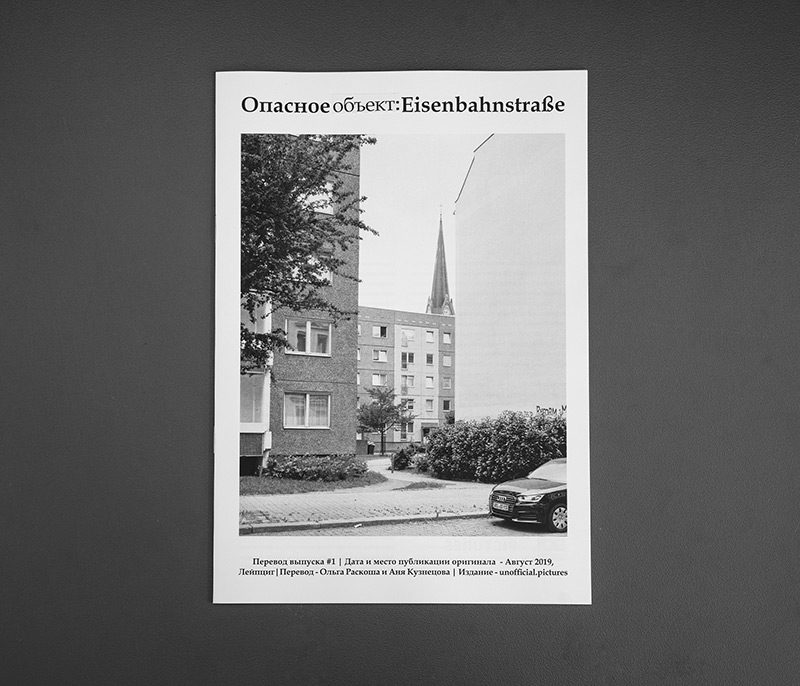
перевод на русский: »Опасный объект: Eisenbahnstraße« Выпуск #1
Suggested Price: 2,00 €plus shipping. No VAT (§19 UStG)
Details -
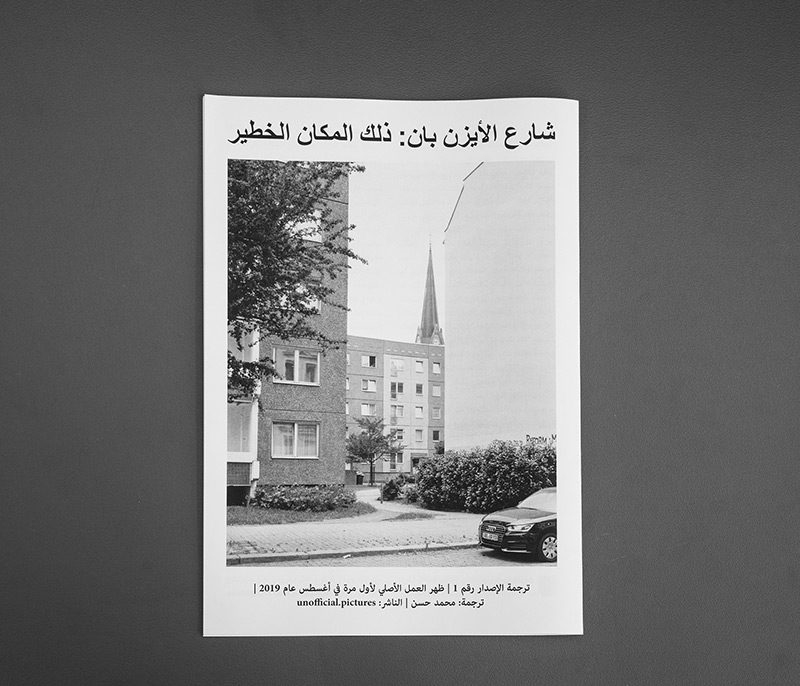
ترجمة الإصدار رقم 1 – شارع الأيزن بان: ذلك المكان الخطير
Suggested Price: 2,00 €plus shipping. No VAT (§19 UStG)
Details
Get Ed. #2
-

Dangerous object: Eisenbahnstraße #2
Suggested Price: 6,00 €plus shipping. No VAT (§19 UStG)
Details
-

перевод на русский: »Опасный объект: Eisenbahnstraße« Выпуск #2
Suggested Price: 2,00 €plus shipping. No VAT (§19 UStG)
Details -
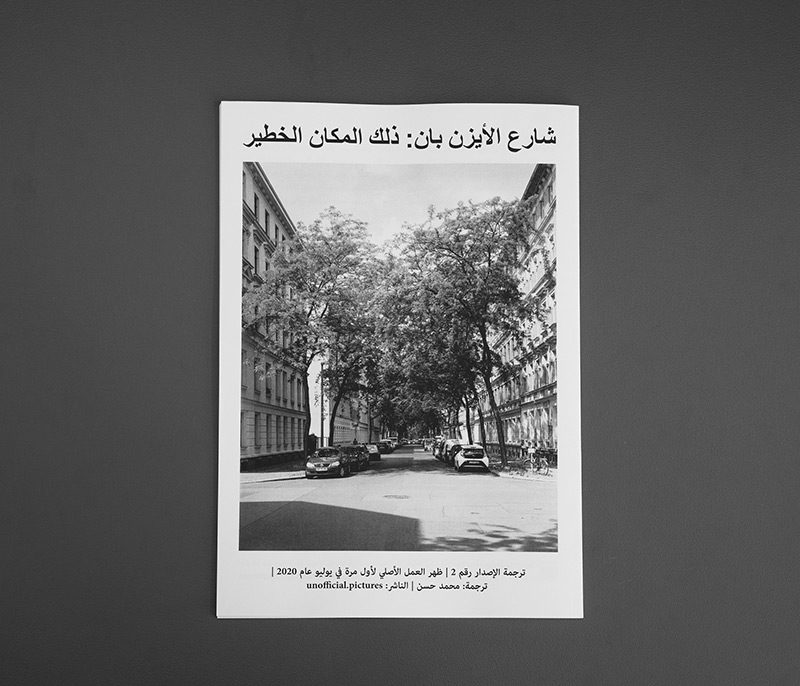
ترجمة الإصدار رقم 2 – شارع الأيزن بان: ذلك المكان الخطير
Suggested Price: 2,00 €plus shipping. No VAT (§19 UStG)
Details
Buy Edition #1 & 2 in German directly for 6€ fixed prize
– Buchhandlung El Libro, Leipzig-Connewitz
– Buchhandlung drift, Leipzig-Plagwitz
Hand prints on baryta paper
Choose one of five large-format photographs. We will enlarge these ourselves in our specialist laboratory to 40x50cm with a white border. The print is hand-signed and limited to an edition of 3 pieces per photograph.
Contact us if you’re interested.
Past events

Readings
We read a selection of inspiring passages out of the five long conversations in the first issue of the newspaper. Then we want to discuss with you: Which problems do you see in the neighborhood? Which experiences did you make with controls in the no-weapons zone? Why is so little happening against the no-weapons zone? What has to change so that everyone can feel safe in the neighborhood?
»Thursday, 23rd January 2020, 6 – 9 p.m.
Pöge-Haus, Hedwigstrasse 20, Leipzig
» Friday 14th February 2020, 8 p.m.
adi, Georg-Schwarz-Str. 19, Leipzig-Lindenau
» Wednesday 19th February 2020, 7 p.m.
el libro, Bornaische Str. 3d, Leipzig-Connewitz
» Saturday 12th September 2020, 5 p.m.
Radical Bookfair Leipzig
10/8/2019
Hildegardstraße, Leipzig
8-9/2019
Döbeln, Weißwasser, Annaberg-Buchholz, Hoyerswerda
with “Kein schöner ____ in dieser Zeit“
15/2/2021 – 28/2/2021
Eisenbahnstraße 97, Leipzig
15/2/2021 – 28/2/2021
Rabet, Leipzig
25/6/21 – 4/7/21
Exhibition during f/stop Leipzig Photo Festival as an f/stop SATELLITE
in the Salon of Villa Plagwitz, Karl-Heine-Str. 108, Leipzig
Exhibitions
Crowdfunding
Thanks to the support of 120 people in crowdfunding, we were able to realize a Second Edition of the newspaper, which was published at the end of July 2020.
